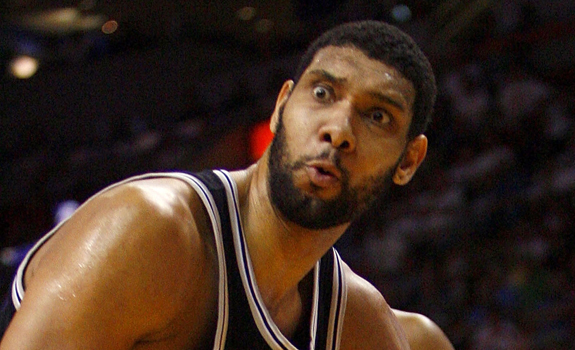
Thoughts On Team Building
2019-05-13With the NBA Draft Lottery taking place tomorrow night, the Cleveland Cavaliers are about to take an important step in the team’s future. If Nick Gilbert is lucky again, the Cavaliers will be selecting Zion Williamson first overall in the NBA Draft. Williamson is the most highly rated college prospect since Anthony Davis and adding him to the fold would drastically change the franchise’s outlook for the future, both on and off the court.
That sounds great, but it likely won’t happen. While the Cavaliers are tied with the New York Knicks and Phoenix Suns for the best odds of winning the lottery, that still gives them just a 14% chance of doing so. Chances are the Cavaliers will draft lower than that, possibly as low as sixth, due to changes in the lottery odds that took effect this season. While that may be upsetting to some fans, it’s by no means the end of the world.
Obviously, there’s real merit to the idea of tanking to acquire star level talent, particularly if a team is not typically a free agent destination. The higher the draft pick the better a team’s chances of adding a player who could someday become an all-star. Tanking over a few seasons would give teams more chances at a high draft pick, and therefore increase their odds of adding a future star. Look no further than the Philadelphia 76ers who have drafted young stars in Joel Embiid and Ben Simmons, used some of their other assets to trade for Jimmy Butler and Tobias Harris, and are now one win away from the Eastern Conference Finals. They had so many high draft picks, they were able to build a core of young stars despite missing on several of their picks, and while they aren’t championship favorites, it’s fair to call the Sixers title contenders. Considering how hard it is to be the final team standing at the end of the season, putting themselves into the elite group that survivor comes from is really all a team can hope for. After that, it’s simply a matter of health, a hot streak at the right time, and a bit of luck.
Still, for every Philadelphia 76ers, there are the New York Knicks or Phoenix Suns that have been terrible for years despite a plethora of high draft picks. This is a slippery slope that’s easy to fall into. Even the most talented young players tend to struggle when they first come to the NBA, and rarely contribute in terms of winning games. Teams have to be patient with them as they grow, but also need to make sure they build winning habits in terms of their style of play and work habits. Unfortunately, NBA teams are rarely patient, they often fire the coaches tasked developing a culture and helping these young players grow before they have the chance to do so. A parade of coaches ensues, giving the young players the feeling that no one in the organization holds them accountable for the losing, and they (logically, given the circumstances) don’t hold themselves accountable either. The draft picks never develop and the losing continues, a vicious cycle that only concludes if and when a new organizational structure is able to be implemented.
This cycle is possibly why the Cavaliers, as they researched how various teams have rebuilt over the years, had made a declaration that they would not tank last season. They had been in that cycle not too long ago themselves, as they were the worst team in the NBA from 2011-2014 while building around Kyrie Irving. While they wound up tied for the second worst record in the NBA this season in spite of their intentions, there are several teams the Cavaliers can look to as models of their rebuilding efforts. These are small and mid-market franchises that have built fun and exciting playoff teams without relying on multiple top picks.
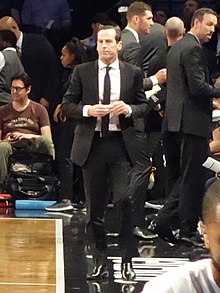
The Brooklyn Nets have been seen as an example of maximizing player development, and with good reason. After making one of the worst in NBA history in 2013 when they acquired Kevin Garnett, Paul Pierce, and Jason Terry for three first-round picks and a pick swap. Despite having fewer avenues to acquire young talent than any other team in the league, the Nets were able to return to the playoffs just four years after initiating a rebuild with a team built around young players and cap flexibility. How did they do it? When looking at the Nets, two things come to mind; making shrewd trades and free agent signings for affordable young talent, and an emphasis on player development to maximize the potential of that talent. Whether it was signing players such as Joe Harris and Spencer Dinwiddie, taking on the contract of Timofey Mozgov so that they can acquire D’Angelo Russell, trading a solid veteran in Thaddeus Young for the rights to Caris LeVert, or selecting a promising young center in Jarrett Allen with the late first-round pick they did have in 2017, the Nets have acquired players who the majority of the NBA either undervalued or didn’t value at all and turned them into quality rotation players, and in the case of Russell, an All-Star. Head coach Kenny Atkinson and his staff deserve a ton of credit for the environment they have created. This process has allowed Brooklyn to build a solid young core that still has potential for growth, while also opening up significant cap space this summer. While it’s unlikely the Nets will become a title contender without acquiring a superstar focal point, they do have the potential to grow into the type of team that can make consistently solid playoff runs. That may not sound like much (although it’s better than two-thirds of the league), but is it really any different than what the Sixers or Boston Celtics have done the past few years with their abundance of high draft picks?
Obviously, the Cavaliers have the benefit of owning first-round picks that the Nets didn’t, but there’s no guarantee that these picks wind first overall like the 76ers picks did when they drafted Embiid and Simmons. In fact, with the new lottery odds, it’s less likely than ever. That also doesn’t mean the Cavaliers can’t build a sustainable contender based around a star player and other draft picks. Several other teams that aren’t free agent destinations have done so.
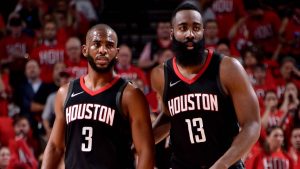
Despite playing in a larger market with no state income tax, the Houston Rockets have rarely been a destination for top free agents. Dwight Howard and Chris Paul are the only superstars to join the Rockets as free agents, and they did so to play with another superstar in James Harden. Hakeem Olajuwon and Yao Ming were taken first overall in the few times Houston had the top pick in the draft, and both times the Rockets nailed the pick. Outside of those few the Rockets have traded for the star level players they’ve had over the past 30 years, from Clyde Drexler, to Tracy McGrady, to Harden.
Prior to acquiring Harden in a trade with the Oklahoma City Thunder, the Rockets had spent the previous three seasons after the Yao/T-Mac era just outside of the playoffs despite posting winning records in each of those seasons. General Manager Daryl Morey focused on acquiring young players who rated well analytically and were on team-friendly deals. These players had just as much value as moveable assets as they did as on-court players. Players such as Kyle Lowry, Goran Dragic, Trevor Ariza, and Jeremy Lin spent time with the Rockets as they constantly looked for the opportunity to add their next superstar. They moved some these players for draft picks and other assets until they finally struck gold in acquiring Harden, a young rising star who analytic models loved and whose team wasn’t interested in giving him a max contract. The Rockets were more than happy to do so, and since then they’ve built one of the best teams in the NBA around Harden. While they haven’t made it back to the NBA Finals, much less won a championship, they’ve been one of the few teams with a realistic chance of doing so. That chance is all a team can realistically hope for.
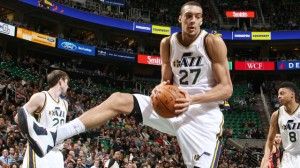
The Denver Nuggets and Utah Jazz are two other teams that have built their teams around young stars and other promising players despite a lack of high draft picks. The last times the Nuggets drafted in the top five was when they selected Carmelo Anthony third overall in 2003. While the Jazz selected Dante Exum fifth overall in the 2014 NBA Draft, the foundational pieces of this Jazz team, Rudy Gobert and Donovan Mitchell were selected with the 27th and 13th picks in their respective drafts. Joe Ingles was claimed off of waivers from the Los Angeles Clippers. Royce O’Neale was signed out of Summer League after starting his career overseas. They have committed to head coach Quin Snyder. The fact that they didn’t miss a beat after Gordon Hayward left to sign with the Boston Celtics in 2017 is a testament to the Jazz as an organization.
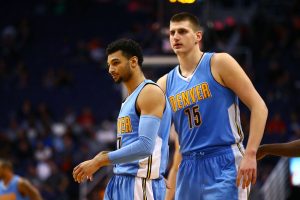
The Nuggets drafted Jamal Murray seventh overall in 2016, but Gary Harris was acquired during the 2014 draft after being selected 19th overall. Malik Beasley was selected in the same spot in 2016. Monte Morris was taken 51st in 2017. Will Barton was acquired (along with a first-round pick!) in 2015 for Arron Afflalo and Alonzo Gee. Most amazingly of course was Nikola Jokic, the Nugget’s All-Star centerpiece, being taken 41st overall in 2014. The Nuggets turned decent assets into young players who have developed into an All-Star and several very good players, with the potential to be something more. They were able to convince Paul MIllsap to join them in free agency, and built a team that just went to Game Seven of the Western Conference Semifinals with the majority of its rotation at 24 years old or younger. Head coach Mike Malone and his staff have done a great job with the youngsters and are very well-regarded. The future is bright in Denver.
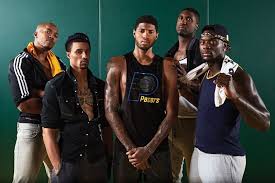
The Indiana Pacers haven’t drafted drafted higher than tenth in the NBA Draft since 1989. They’ve consistently built winners through a combination of organizational stability, smart drafting, careful trades, shrewd free agent signings, and a clear identity on the court. That identity has gone through several changes over the years, but it’s always the right one for the players on the roster. Like the Jazz, they lost a superstar and followed it up without missing a beat, as the trade of Paul George to the Oklahoma City Thunder for Victor Oladipo and Domantas Sabonis is a terrific example of a deal that has worked out for both teams involved.
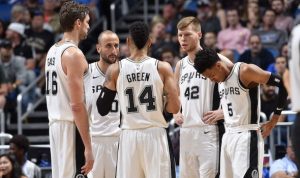
Many people would say that the San Antonio Spurs are the model that mid-market teams (and all teams for that matter) should follow. While that’s a valid point, the Spurs’ foundation was built around a pair of number one picks. David Robinson was a former MVP who missed 76 games in the 1996-1997 season, allowing the Spurs the chance to win the 1997 NBA Lottery and select Tim Duncan with the first pick in the draft. Yes, these two Hall of Famers—arguably the two most selfless superstars in NBA history—combined with Gregg Popovich to create a culture of hard work and accountability that has set the standard in the NBA for two decades. Yes, the Spurs have made amazing draft picks outside of the lottery and even the first round in Tony Parker, Manu Ginobili, and Kawhi Leonard. Yes, they’ve conjured up rotation players out of nowhere with likes of Stephen Jackson and Danny Green. There are so many things that the Spurs do in terms of scouting, player development, and organizational stability that the Cavaliers should emulate. They truly are the gold standard of the NBA. Unfortunately, acquiring two players who have both the character and ability of Duncan and Robinson, the foundation of that machine in San Antonio, is virtually impossible.
When looking at the teams mentioned above, there’s no doubt that high draft picks can help rebuild a team. Still, it’s not the only component needed to build a contender, and likely nowhere near the most important one. When looking what these teams, as well as other championship organizations, have in common, you see an emphasis on smart scouting, good value from draft picks, shrew trades, great asset management, stability in front office and coaching staff, and terrific player development. A culture of accountability is also a must. Whether or not the Cavaliers are even able to exhibit all of these traits is an unknown. Dan Gilbert isn’t exactly known for his patience. Still, if they are able to build the kind of culture and organizational stability as the teams mentioned above, then they will have a chance to build a team that can win at a high level for a long time, regardless of what happens tomorrow night.

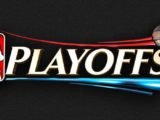
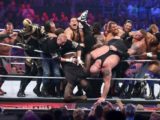
HAPPY 4OTH —-HOPE WE ARE CELEBRATING YOUR BIRTHDAY AND THE # 1 PICK——-BRING US LUCK THE OTHER JASON !!!
New post up.
Today is my 40th birthday and wishing for Zion
Happy bday, I think we all hope that wish comes true.
Happy 40th!
Happy birthday!
I know what you’re wishing for before blowing them candles.
The idea of hitting the lotto and that pick speaeheading that team to a title, largely by himself, is VERY rare. Bill Walton. That is probably it.
Later day Duncan after Robinson retired may count, but is he close to the same guy without the Admiral? Kareem in 71 is close, but je did have Oscar Robertson.
My favorite stat is that since NO beat out the Hornets for Anthony Davis, Charlotte has won more games. Despite taking MKG 2nd.
You’re forgetting Magic.
I will start over with the one teamers: link:
https://en.m.wikipedia.org/wiki/List_of_NBA_players_who_have_spent_their_entire_career_with_one_franchise
Dirk (21 years). Kobe (20). 19 = Duncan & Stockton. Reggie Miller (18). 16 = Havlicek, Manu, Udonis Haslem*. 15 = Dolph Schayes, Hal Greer, Nick Collison*. 14 = Elgin Baylor, Jerry West, Joe Dumars, the Admiral. 13 = Bill Russell, Bird, Magic, Isiah, McHale, Wes Unseld, Satch Sanders, Downtown Freddie Brown*, Alvin Adams*, Jeff Foster*.
Stopped at 13 years. There are more, but many are HOF types. All but the 5 with *s above.
A reminder of what’s really at stake tonight:
https://twitter.com/AmicoHoops/status/1080943022576152577
Failing that, he’ll type up a lot of snotty, drunken tweets.
Let’s all channel our collective luck to Nick. Given everyone’s analysis, both the talking heads and CtB, we are resigned to getting a later lottery pick. We have as good a chance at Zion as anyone. How cool would that be!
Odds have our likeliest landing spots as 5th and 6th. But top 4 is still over 50%.
Let us just hope we do not see any risers early. I will take according to Hoyle draft order.
FWIW, that I can see, only 4 #1 picks since the lottery started have won titles with the teams that drafted them. One had to get hurt one season (David Robinson) so the team could draft the second (Tim Duncan). They won two titles together in the Admiral’s twilight (1999 & 2003) a Timmay won 3 more (2005, 2007, 2014). The others were also a pair. Where left & came back (LeBron) to join a #1 pick that happened in his absence (Kyrie). Ealier #1s that won titles with the teams that drafted them (draft year/title): Lew Alcindo/Kareem with Milwaukee… Read more »
Yeah, winning titles is hard, but #1 picks can often improve your team a lot, and carry them to the playoffs. Sometimes they can be gumdrop bears who can’t play, of course, but I doubt Zion is a gumdrop bear.
And Gumdrop should not have been #1. I don’t think anyone expected him to be the top choice
Thst was a waste of an opportunity. What a shame.
Wow, that’s a crazy stat, though it makes sense. I wonder what percentage of players retire on the team that drafted them? Probably close to none.
Some do. Whole career with one team is rare, but happens more iften amongst all-timers: Duncan, Kobe, Dirk, Stockton, Bird, Magic, Olajuwon, Russell, Havlicek, West, Baylor, Pettit.
Sometimes guys play a majority in one spot, leave, and then come back (Wade).
For me, drafting. 1 = Zion. 2 = Morant (though if we like Barrett, try to trade down). 3 = Barrett. 4 = Hunter.
5-6. = Reddish/Garland/Culver. Down to workouts & background.
Is Reddish a hard worker? Can Culver shoot? Is Garland healthy & can he defend?
Somehow I feel Hawks, Dallas, Knicks, and Pels. In some order.
Hope I am wrong.
I forgot the lottery was tonight. Go Cavs! Beat the Knicks and Suns.
Prepare for disappointment, and hope for the best. I will be delighted if Cavs land top three. Especially if Celtics and Lakers face justice.
I’m with you Mike.
I’m fulling expecting one of those two teams to score a high pick and infuriate the rest of us.
Got the same feeling.
fully*
MICH. PLAYER / WHO PLAYED FOR BEILEIN –STAUKAS —IS HE NOW SAFE / DO THE CAVS KEEP HIM ?
I doubt Coach B will hang his NBA career on Staukas. He’ll be given a chance to prove he can play at this level, we’ll see.
He is right on the edge.
Love, Sexton, LNJ, Cedi + #1 pick = Core of 5.
TT, Delly, Clarkson, Knight, Henson = 5 vets on expirings that likely at least start the year here (though a summer trade is possibe).
That is 10. Zizic is under contract. Plus you have the #26 (couldbe eurostash but I doubt it). That is 12. Nwaba is a RFA, if we lock him up that is 13.
That leaves 2 spits for Suace, Chriss, any player(s) we get back in a JR deal, and FAs. Thinnest on the wing (Cedi, Nwaba).
He would be sitting at #14 right now, pending the draft & JR deals, for me.
READ THE SAME ARTICLE—JUST THINK -( LIKE ANYTHING )–THAT THERE ARE TOO MANY VARIABLES TO ACCURATELY JUDGE SUCCESS OR FAILURE IN THOSE INSTANCES —-UNLESS THERE WAS AN OBVIOUS WEAKNESS / FLARE UP / DISCONNECT ——JUST MY OPINION ——–DO BELIEVE “COACH B ” KNOWS / UNDERSTANDS THE GAME OF BASKETBALL / HAS A GOOD COMMMUNICATION WITH PLAYERS / STAFF / ETC —-AND THINK THIS GROUP OF PLAYERS IS IDEAL / WILL BE RECEPTIVE TO HIS STYLE OF COACHING ……WILL BE IMPORTANT TO SURROUND HIMSELF WITH EXPERIENCED / GOOD ASSISTANTS …….”TIME WILL TELL ” ……………………….SPEAKING OF “TIME WILL TELL “………WE ARE “ON… Read more »
Four letter has an article with history of coaches making the jump from D1 to NBA in the last 25 years: it is not pretty, for the most part.
http://www.espn.com/mens-college-basketball/story/_/id/26738229/how-college-coaches-fared-nba
I believe Coach B (Can we start calling him that?) will be fine with a solid cast of assistant coaches. At least that’s what everything points to from the comments given by people who know him and his work ethics.
We’ll see I guess. I’m sure he’ll be better than Lue and Brown.
Definitely not pretty, especially when some of these bloated egos like Calipari and Pitino were given personnel power along with the HC job. I’m guardedly optimistic that this particular coach for this particular roster may work. Let’s see who fills out the assistant bench…
At least he isn’t one of the ones with a bloated ego… or it doesn’t seem like it, anyhow. I guess I don’t mind the hire but I am also far from loving it. It is definitely not a hire that would work on a team with multiple stars and big egos. Luckily, KLove has about the smallest ego we could hope for in a star and all indications are that Sexton is pretty dang humble and willing to take direction. That being said, if we were to land Zion, I’m not sure how that pans out.
Read the profiles about Zion… there will be no trouble with him taking coaching. He wouldn’t have gone to Duke if he didn’t want to be coached.
I’m excited about the hire, non-Cavs NBA fans like it too, as well as Koby Altman. Also, I’m not sure I’m buying the idea this was solely a Gilbert-driven hire… in fact, the Chris Fedor article paints the exact opposite picture, that the hire was driven by Altman and his assistant, who played for Beilein. https://www.cleveland.com/cavs/2019/05/cleveland-cavaliers-unsurprisingly-take-big-swing-with-john-beilein-hiring.html
https://twitter.com/oldseaminer/status/1128120721949982721?s=19
I do wonder what long term plans are for this team as far as coaching. I sort of am surprised they didn’t try to find the COTF with this hire. COTF being a guy that has the potential to be a institutional figurehead for a decade or more. Not that that is common. Guess I can really only think of four guys who fit that bill: Pop, Carlisle, Spolestra, and Rivers (who is probably on that route for the clippers). I suppose it is may be unreasonable to think you will find your coach that also happens to be synonymous… Read more »
Oh and I guess you can throw Kerr in there as a guy who will probably be in GS for a long time and because of his offensive system and switching d which sort of is synonymous with GS.
COTF?
Coach of the future. Sorry I thought of the future parlance was more known after the whole browns qbtof (quarterback of the future) thing.
Qbotf
https://twitter.com/wojespn/status/1128067847089840128
Sounds promising…. although I wasn’t a fan of Bickerstaff’s work as HC IIRC
Not at all interested in Bickerstaff being promoted to HC if Beinlein doesn’t work out, so hopefully it doesn’t come to that.
Yeah, I’m fine with him as an assistant, not so hot on the idea of a HC in waiting…wonder if Beilein has some relationship with him or his dad…
I wonder if Beilein’s age could be attractive for assistant coaches. If you are in the #2/#3 chair, you have to know the HC will not stay THAT long. Come in. Help develop a culture/system & players. Then take the reins later.
Just heard, interesting hire…. Beilein is a great coach. But, age, no NBA experience makes it a little bit of a risk. I like the idea though of him developing the younger guys, Sexton, Cedi, LNJ, Zizic, the incoming rookies.
WORLDBFREE—SO TRUE ON THE BLAZERS CULTURE AND BELIEVE HOW IT AFFECTED HOOD / 1ST PLAYING WITH THE PRESSURE OF PLAYING WITH JAMES / THEN HOW LUE HANDLED HIS MINUTES –DID NOT PUT HIM IN A ” COMFORT ‘ ZONE ETC / REALLY THINK EVEN AFTER THE LUE FIRING–THE DAMAGE HAD ALREADY BEEN DONE AS FAR AS HOOD BEING A SOLID / CONFIDENT PLAYER WEARING A CAVS UNIFORM
Off topic here — except maybe on the question of franchise culture — but was anybody else struck by how Lillard’s postgame presser yesterday contrasted with all of LBJ’s and Kyrie’s both as Cavs and in their current franchises? It’s amazing how different it is to hear a guy talk about chemistry and trusting his teammates when you know he walks the walk. So much respect for Dame/CJ and the spirit you feel in the franchise. It’s no accident that less cocky guys like Hood and Hill are doing so much better (esp in playoffs) on teams where the superstars… Read more »
One of our, the CtB’rs, biggest criticisms of Lue and support of Drew was player development. They look to be going all in with Beilein to grow Sexton’s, LNJ, Cedi, and our lottery picks’ games. Clarkson and Nwaba with the right hand on their wheels have the potential to be damn solid NBA contributors. Building a culture with these young pieces and positive role model veterans like Love sounds like a great long term plan to me.
TIME WILL TELL——EVERYONE IS GOING TO HAVE PROS/ CONS ON THE HIRING ——I DEFENDED/ SUPPPORTED THE HIRING WHEN I FIRST HEARD —————THEN STARTED TO THINK HE WAS TOTALLY OUT COACHED 3 TIMES BY IZZO THIS YEAR ——TWICE HAVING RATHER LARGE LEADS AT HALF TIME —–SO YES SIT BACK / OBSERVE / BE SUPPORTIVE (AT FIRST )——–IF THE IST DECISION HE MAKES IS FIRING LONGINBARF—I AM “ALL IN ” !!!
One other thing we need to consider is wether good NBA coaching prospects/assistants are lining up for a job with the Cavs? I mean, why not go somewhere else instead?
I don’t think the hiring stops the positivity created by the Lue firing and development created by Coach Drew.
If I had my rathers I would rather have Coach Hammon but I’m not mad at this. Time will tell.
I’m also sure the incredible CtB staff is already putting together a fabulous article about the pros/cons of the new coach ;)
Or at least a fabulous podcast…
Or that :)
If they’re interviewing, have to assume they’re interested.
Seems like Beilein could be fun — especially at first. Probably won’t last 5 years, but I like the infusion of character and focus on development. Seems to really scratch an itch that Gilbert has had for a long time. I wonder if Izzo got sick of Gilbert calling him and managed to convince him to try Beilein instead…
This hire actually falls totally in line with recent Gilbert coaching decisions. Blatt was out of the box and so was hiring Mike Brown a second time. Firing Blatt midseason in the middle of contending was maybe a bit out the box. Gilbert has seemingly zigged everytime when everyone thinks he will zag. With that in mind, this hire sort of fits that pattern. Given the secrecy surrounding his interviews, it is possible that they or DG wanted Beilein the whole time and that the other interviews were just smokescreens to throw off attention from Beilein and prevent anyone poaching… Read more »
Supposedly the Cavs are looking to hire one of their other candidates as associate head coach…Jordy Fernandez would be nice…
I think this is an extraordinarily good idea.
Okay so now that the smoke has settled a bit and I’ve had the time to listen/read about Coach Beilein, I’m neutral on the hiring. Guy seems to be well spoken of and has shown he can cultivate a winning attitude. Apparently he coaches a very “Warrioesque” offense. I like that.
As long as he can develop the talent of YB, Cedi, Zz, Nance and whoever else we pick/get, I’m all in.
I still say we did better than the Lakers ;)
Oof, Lakers are a low low bar. I am skeptical, but we could have done worse.
http://www.espn.com/mens-college-basketball/story/_/id/26738229/how-college-coaches-fared-nba
You could add Larry Brown to that list, but most of his early career was ABA/NBA teams.
I’ll say this. This is about the only scenario where a college coach hire with no nba experience might work, shaping a young team whose best player is as humble/grounded as K Love. The managing egos thing might not be as big a deal on this team at this point. It will still be a thing, but certainly less of a thing than a team with multiple stars in their prime.
https://twitter.com/oldseaminer/status/1127974054420463616?s=19
Oh Gilbert, how is quicken loans even a thing? College coach with zero nba experience. Is he another Brad Stevens? Doubt it. I am really really skeptical of the college coach route. This reeks of DG meddling in bball strategic decisions which does not bode well.
Less concerned with a guy like that’s tactical ability (though college is way different) than ability to manage personalities and egos. You don’t have to do that in college because coaches have the power, but it is a huge part of the nba.
Agree with the personalities thing, but he’s always gotten on with his players well, so that may be no problem. He isn’t some Rick Pitino style yeller. His choice of assistants will be interesting…he has some good ones at UM. Maybe he’ll keep Longo for NOMAD and EG.
It just seems so out of left field. Clearly he is a stopgap coach, whether Gilbert realizes that or not. I mean the guy is 66. Which makes me wonder how much longer he plans on coaching anyway. This sounds like a hire because of the Michigan connection, which is bizarre. It isn’t nepotism because I haven’t read that they are friends, but it does seem like weird Gilbert bias.
Top Cavs offseason Priorities:
1) Hire a good HC. Jury is out. Decision made.
2) Get rid of Longabarfi/hire good ACs. Not yet.
3) Lotto luck/draft well.
4) Trade JR for something.
5) Keep Nwaba.
6) Tank or convey next year
https://twitter.com/MZavagno11/status/1127942973793001473
Like John B mentions above. I’m less concerned about his X’s and O’s and more concerned about his personality management skills and his developmental ability. I just don’t understand how you can interview candidates like they did and come away with this guy being the best choice. It’s gotta be DG.
Who knows how this will work. But after the initial shock, I am starting to like the idea.
If nothing else, I hope this hire means the dumpster fire defense is on the way out…
Since it looks like Gilbert is still making all of the decisions I imagine the Cavs will be taking Carsen Edwards at #1 overall.
Good call! Maybe with the Rockets pick. You know Dan lurves that dude…
I think you gotta take him #1 overall. Can’t risk him being gone at 26!
COULD BE WORSE—-COULD HAVE JASON KIDDD AS TOP ASSISTANT COACH
God this just reeks too strongly of Gilbert subverting the hiring process and not trusting his GM.
SAW SOMEWHERE THE CAVS WERE GOING TO HIRE / SURROUND BELEIN WITH VERY GOOD ASSISTANT COACHES——SO LONG LONGINBARF !!!!!!!!!!!
……….AND ALSO AT THE SAME TIME WE PUT IT TO THAT TEAM UP NORTH !!!!! : )
Of course Dan Gilbert hires a Michigan guy.
I know nothing about him, and hope he does well here.
Were other teams going after Beilin too? Or just the Cavs?
Pistons were interested last year, and the Magic prior to that…there has been some interest…
Interesting, thanks.
He is certainly a good college coach. Having done well at Michigan (2 Final Fours, 4 Big Ten Titles/Tourney titles). And at West Virginia previously.
Has turned non 5 star talent into high draft picks consistently (Hardaway Jr, LaVert, Wagner, DJ Wilson).
Supposed to be an offensive/player development
guy but recent Michigan teams seemed more defensive.
I DON’T KNOW / DON’T THINK ANYBODY DOES —-YES A YOIUNGER COACH WAS ALWAYS THOUGHT TO BE TOP PRIORITY BUT BEILIEN’S COACHING RECORD ISN’T TOO SHABBY EITHER –HE WON WHEREVER HE COACHED —TEAMS WERE FUNDAMENTALLY SOUND / PLAYED HARD TOUGH NOSED DEFENSE / GOT THE MOST OUT OF HIS TALENT / WAS COACHING “YOUNGER ‘ PLAYERS —CAN RELATE WITH THEM ——–GOING TO TAKE A “PASS ” RIGHT NOW ON THUMBS UP OR THUMBS DOWN ON THE HIRE
Who is this guy? Is he a good coach? Anybody who knows please elaborate.
Only thing I know is that he seems a little old for such a rebuilding roster.
Great college coach, lot of success recently at Michigan (UM fans are slashing their wrists right now), NBA, who knows. The Cavs do have the type of team makeup that may work for him.
https://twitter.com/MZavagno11/status/1127938007699460096
Thanks MikeO!
Well this is kind of a bummer. At least the Lakers got Vogel and Kidd.
*Cup half full kinda guy.
I thought we wanted a long term person? Dude is 66.
Dan probably wanted a big name college guy from Michigan, so that trumps anything else. Who knows, he may be great. But older than I’d like for sure.
And I thought Gilbert was staying out of it?
Nearly everything the FO said about the search was a lie.
Hope Bron buys it from Gilbert someday soon.
https://twitter.com/wojespn/status/1127920930121048064
John Beilein hired as coach? Sounds like a Dan Gilbert hire…
https://twitter.com/wojespn/status/1127917966962696192
Yep. What happened to having two rounds of interviews and Gilbert staying out of it?
Still incompetently run. Can’t trust them.
Generally, I do not like college coaches at the NBA level. Messina/Fernandez is who we should have hired.
Plusxa friggin Michigan hire and a quick one. Had to ne Gilbert.
I like him as a coach, but he’s 66 and not an NBA guy. We’ll see, he may be a home run, but it just screams DAN to me. I think he will be a boon for Sexton’s development, and would be awesome for Zion, if the Cavs get him. Thought they’d go young and NBA.
It’s all about coaching and talent recognition. Coach Lue was a mediocre coach and wether it was him, LeBron or someone else behind the scenes who was evaluating talent and making decisions, he was just as bad as Lue at coaching.
I said it when we got Zz from Boston. If that was a Cavs’ employee wanting Zz to be included in the deal, that person needs to be in charge of talent development. Seeing how the young guys developed last season, I think we have a good shot of getting better rather quickly.
Ans then Dan goes and hires a college dude.